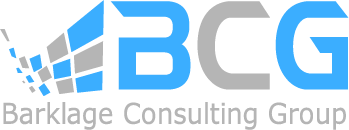When you decide to keep IT in-house this can reduce business efficiency since it generally requires an investment in research, development, marketing, and additional staff. On the other hand, if you choose to outsource IT, this can increase the efficiency of your business due to competitive advantages which are realized through reduced costs and access to the latest technologies. As your business expands, it becomes more dependent on IT and the latest technologies to meet marketplace demands. No longer is outsourcing IT simply about reducing costs.
Making the decision to outsource IT or keep it in-house is a major consideration most businesses face in the current economy. It can be difficult to determine for sure whether or not you should outsource IT services since this is a decision which rests on the individual requirements for your business. The best place to start with the decision making process is to review the pros and cons of outsourcing IT or keeping it in-house. This involves the evaluation of specific criteria which addresses various aspects of your business.
Staff Concerns
If you are a small business, it can be costly to hire and train staff for short term or marginal projects provided you choose to implement the projects in-house. When you choose to outsource IT to a qualified provider, this allows you to focus staff efforts on important business initiatives which contribute to growth and profitability.
Business Efficiency
Range of Technology
If you are maintaining an in-house IT infrastructure, your organization may function with multiple different types of technology and operating systems. This requires a broad skillset with a variety of competencies on the part of your IT staff. This means it may be necessary to employ a large staff of IT professionals in order to cover the entire competencies and skillset.
When you outsource IT which operates on varied technologies and operating systems, an outsourced service provider has access to an entire team of professionals which cover a broad range of skills. This ensures all of your requirements are met without the expense and hassles associated with relying on one or a few staff members with a limited skillset.
Risk Management
Maintaining IT in-house can help to mitigate risks associated with working with an outsourcing provider. Some of the risks can include language barriers, distance challenges, specific operations the outsourced provider uses, security considerations, accessibility, and more. However, if you are a small business, the risks you avoid by keeping IT in-house can possibly catch up with you in the long term when the technologies you are using become outdated.
If you do your homework and outsource IT to a reputable provider, chances are the provider has implemented the necessary technologies which are designed to mitigate risk. In this case, the majority of the risks are managed by the services provider and you may only be required to deal with a few marginal risks.

Server Sprawl and Unused Resources
IT infrastructures which are implemented and maintained in-house often suffer from server sprawl and unused resources. Each time a new initiative is implemented more resources and hardware is added. As the company grows or fluctuates, the end result is unused and wasted resources, not to mention an infrastructure which is difficult to maintain.
In the above scenario, it may make more sense to outsource IT to a qualified services provider that can help you consolidate resources. This ensures that you only pay for what you use while the infrastructure is expertly maintained by a team of professionals with specialized skillsets. You can also easily change the architecture as your business changes.
Location
Location is another consideration. For remote support, the geographical location is irrelevant because your computer network can be securely accessed from anywhere in the world. However, it would be wise to source a local company if you require scheduled onsite assistance, or if you require a business critical SLA for failed hardware/network etc. The internet is a great place to search for local businesses.
Cost
If you are a large enterprise, maintaining IT resources in-house results in realizing cost advantages. This is because large IT organizations have the substantial budget which is necessary to implement IT infrastructures and this is counterbalanced by increased product output.
Maintaining a local infrastructure in-house may not sensible for smaller organizations since the IT costs can far exceed product output. In this instance, it may make more sense to outsource IT to enable your organization to access the same “economies of scale” that the larger enterprises enjoy. This helps to level the playing field in a competitive marketplace.
New IT Initiatives
When you launch a new IT initiative in-house, this requires a significant investment in planning and implementing the right resources. Meanwhile, productivity may suffer especially if you are trying to increase productivity using older technologies. Additionally, you must handle the cost burden associated with building your own IT infrastructure and employing IT staff to manage, monitor, and maintain the system.
When you opt to outsource a new IT initiative to a qualified services provider, the time-to-value is realized much sooner since the infrastructure is accessed via an Internet connection. This ensures you have all the resources and capabilities which are required to launch a new initiative plus, you have access to these resources within a relatively short period of time.
Customer Relationships
In today’s marketplace consumer demands for new products and better customer service have compelled businesses to find ways to meet these demands. Working with an IT infrastructure in-house can sometimes mean the inability to meet customer demand in an effective and timely manner.
Depending upon your organization, outsourcing IT to an established service provider means immediate access to the latest technologies which help you to develop new products and services faster in addition to increasing customer satisfaction.
Keep in mind that there are specific functions businesses are hesitant to outsource such as financial and security applications. The good news is from the security standpoint this has changed significantly with outsource service providers.
Outsourced IT security services have gradually become more popular as more businesses are seeking to outsource everything from intrusion detection monitoring and firewall implementation to monitoring access control lists, email security applications, and much more.
It is also important to mention that some businesses do not outsource all functions and instead, pick and choose what they want to outsource. This increases the popularity of outsourcing since it offers flexibility and scalability all at a reduced cost.


